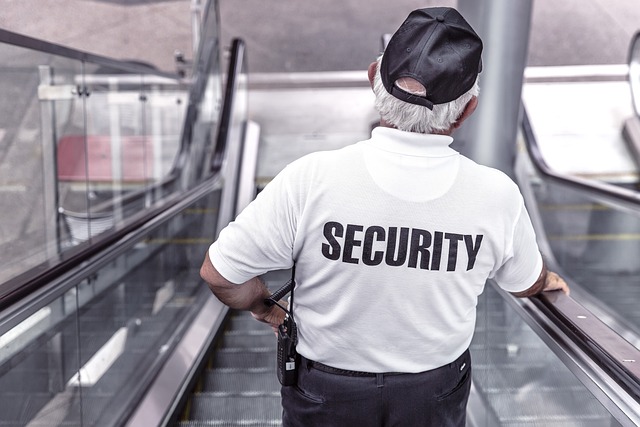To ensure robust home security through surveillance cameras, it's essential to carefully select camera types and strategic placement for optimal coverage, focusing on high-priority areas like entryways, hallways, and staircases. High-resolution cameras with night vision and motion detection capabilities are recommended for clear activity capture around the clock. Dome cameras offer wide-angle views for public spaces within your home, while bullet cameras are ideal for outdoor surveillance. For discreet indoor security, consider pinhole cameras. Integration with your existing home security system is key for comprehensive coverage, which can be achieved through professional installation or DIY kits, each offering different advantages. Ensure your system includes motion-activated lighting to improve nighttime visibility and deter intruders. A reliable NVR or DVR system, regular firmware updates, and routine testing are critical for maintaining an effective surveillance setup that deters threats and provides quality evidence post-incident, all contributing to a secure and safe living environment.
When fortifying your home against potential threats, strategic surveillance camera installation is paramount. This article navigates the essentials of securing your living space through tailored camera placement and selection. From evaluating your property’s vulnerabilities to choosing between professional installation or DIY methods, we explore the optimal approach for comprehensive coverage within your home security system. With insights into maximizing effectiveness and adhering to best practices, ensure your investment delivers robust protection.
- Assessing Your Home's Security Needs: Understanding the Importance of Strategic Placement
- Selecting the Right Cameras for Your Home Security System
- Professional Installation vs. DIY: Weighing Your Options for Surveillance Camera Setup
- Maximizing Effectiveness: Tips and Best Practices for Ensuring Full Coverage with Your Surveillance System
Assessing Your Home's Security Needs: Understanding the Importance of Strategic Placement

When fortifying your home with surveillance cameras as part of your home security system, strategic placement is paramount to achieve comprehensive coverage and peace of mind. High-traffic areas such as entryways, hallways, and staircases should be prioritized for monitoring, as these locations often serve as critical junctures within a home’s layout. Consider the natural flow of your household’s daily activities; placing cameras at vantage points can provide clear views of both indoor and outdoor spaces where activity is most likely to occur. Cameras should also be positioned to cover blind spots or areas that are less frequently traversed, ensuring no corner of your home remains unobserved. By evaluating your property’s unique features and common entry points, you can create a tailored surveillance plan that deters potential intruders and enhances overall home security. Additionally, integrating motion-activated cameras can further optimize your system, triggering recordings when movement is detected, thereby increasing the efficiency of your security measures. With thoughtful placement and consideration of your home’s specific security needs, surveillance cameras become a powerful ally in maintaining a secure environment for you and your family.
Selecting the Right Cameras for Your Home Security System

When considering home security camera installation, selecting the right cameras is paramount for effective surveillance and peace of mind. The first step in this process involves assessing your home’s specific needs and potential vulnerabilities. High-resolution cameras with night vision capabilities should be a priority, ensuring that activity is captured clearly at all times. Additionally, choosing cameras with motion detection features can prevent storage waste by recording only when movement is detected, optimizing the efficiency of your security system.
Furthermore, the types of cameras suitable for your home depend on various factors such as blind spots, entry points, and areas of high importance. Dome cameras offer a wide-angle view and are less conspicuous, making them ideal for monitoring common areas. Bullet cameras, on the other hand, are great for long-range surveillance, often used outdoors to monitor driveways or backyards. For indoor security, consider discreet options like pinhole cameras that can be strategically placed without drawing attention. In any case, ensure the cameras you select integrate seamlessly with your home security system, providing a comprehensive view of your property and enhancing overall visibility for enhanced protection.
Professional Installation vs. DIY: Weighing Your Options for Surveillance Camera Setup

When considering the installation of surveillance cameras as part of your home security measures, it’s crucial to weigh the pros and cons of professional installation versus a DIY approach. Professional installation services offer expertise and experience that can ensure your cameras are placed optimally for comprehensive coverage. These experts understand the best angles, positions, and even the technical specifications required for different camera types, which can significantly enhance the effectiveness of your surveillance system. They also handle all the complex wiring, potentially saving you time and effort. Moreover, professionals can integrate your cameras with other home security systems, providing a seamless, comprehensive security solution tailored to your needs.
On the other hand, for those who prefer a hands-on approach or have specific requirements that can be managed with careful planning, DIY surveillance camera installation is an option. With the abundance of user-friendly equipment and online resources available today, many homeowners feel confident in setting up their own systems. DIY kits often come with step-by-step guides and customer support to assist you through the process. However, it’s important to consider the time investment and technical challenges that may arise, such as ensuring your network is secure, managing data storage, and understanding the legal implications of surveillance within your jurisdiction. Whether you choose professional installation or opt for a DIY setup, the goal is to create a home security system that provides peace of mind and enhances visibility around your property.
Maximizing Effectiveness: Tips and Best Practices for Ensuring Full Coverage with Your Surveillance System

When installing surveillance cameras as part of your home security system, maximizing their effectiveness is paramount for ensuring full coverage and peace of mind. Optimal placement of cameras is a critical factor; position them at strategic heights and angles to capture the widest view without blind spots. Cameras should cover all entry points, including doors and windows, as well as high-traffic areas within the home. Utilize various types of cameras; dome cameras for discreet monitoring, bullet cameras for outdoor areas, and PTZ (Pan-Tilt-Zoom) cameras for areas that require more comprehensive coverage.
To further enhance your system’s effectiveness, consider the lighting conditions in and around your property. Motion-activated lighting can not only deter intruders but also improve camera footage quality at night. Ensure that your surveillance system is networked with a reliable NVR (Network Video Recorder) or DVR (Digital Video Recorder) to store and manage video feeds efficiently. Regularly update the firmware of your cameras and recorders to benefit from the latest security features and improvements. Additionally, test your system regularly to ensure all components are functioning correctly and that your home security setup provides comprehensive coverage, deterring potential threats while capturing high-quality footage for post-incident analysis.
In concluding our discussion on enhancing home security through strategic surveillance camera installation, it’s clear that the integration of these systems can significantly bolster visibility and deter potential intruders. By carefully assessing your home’s security needs and selecting cameras tailored to your specific environment, you can create a robust defense. Consider the merits of professional installation versus DIY approaches to ensure optimal placement and functionality. Ultimately, by adhering to best practices for full coverage, your surveillance system will not only provide peace of mind but also serve as an effective deterrent. Homeowners looking to fortify their properties can take confident steps towards securing their homes with the right combination of technology and planning.
